Rio Olympics 2016: Taliqua Clancy the first indigenous beach volleyball player to represent Australia
SHE grew up more than 200km from the ocean but Taliqua Clancy has defied expectations to become the first indigenous beach volleyball player to represent Australia.
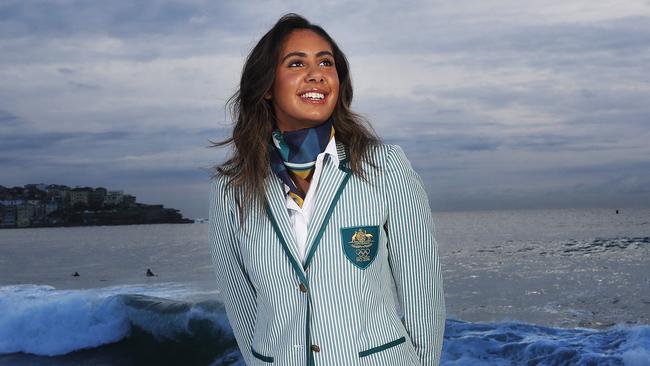
QLD News
Don't miss out on the headlines from QLD News. Followed categories will be added to My News.
THE Wulli Wulli are freshwater people, not a whisper of salt on their skin. Their country lies to the west of Bundaberg, where the Dawson River tumbles through Theodore, Eidsvold, Taroom and Cracow in Queensland’s North Burnett region.
She is a proud Wulli Wulli woman who grew up in Kingaroy, about 200km from the nearest surf beach, miles from the song of the sea. But tonight, when Taliqua Clancy steps up, alongside teammate Louise Bawden, to the net at the 2016 Olympic Games in Rio de Janeiro, she will do so as Australia’s first indigenous beach volleyball player in one of two teams representing the nation.
PAIRING: Clancy already has net effect
For Clancy, 24, competing on the golden sands of Rio’s famed Copacabana Beach represents the end game of a journey that began as a schoolgirl and playing, she recalls, “everything”.
“Netball, soccer, touch footy, running, long jump, athletics, cross country, indoor volleyball, swimming – if it meant you could move, I was into it,” Clancy recalls. “I played every sport on offer.”
Beach volleyball, however, was not one them, with Kingaroy (about 210km northwest of Brisbane), she laughs, not really known for its golden sands. Yet, here she is, ready to take on the world’s best, at one of the world’s best-known beaches. So how did she do it?
The journey began within the close-knit, family bonds of the Wulli Wulli, and in a Holden Barina.
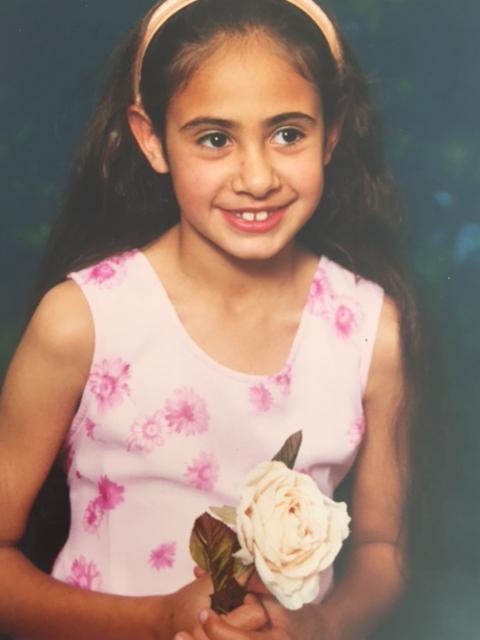
Up and down. Up and down the D’Aguilar Hightway, through Kingaroy, Nanango, Blackbutt, Kilcoy, Caboolture and Morayfield to Brisbane, then back up again, all in one, long day. Thirteen-year-old Taliqua Clancy and her mum, Shannon, are making the 420km round trip from Kingaroy to Brisbane most weekends, talking, laughing and listening to the radio together to stay awake.
A teenage Clancy has started to shine at indoor volleyball at Kingaroy State High and has been talent-spotted by the Queensland Academy of Sport (QAS) while playing in the statewide “Schools Cup” tournament.
Clancy has been offered a chance to train and play at the QAS’s Nathan headquarters in Brisbane’s south, and her mother Shannon doesn’t hesitate to ensure her daughter gets her best shot at success.
Back then, Clancy remembers, it seemed like the two of them were “always in the car”.
“I think when you’re younger, you don’t really see how much people do for you, my whole family did so much,” Clancy says. “With my mum, there was just never any question that she would drive me down to training; I don’t even remember it being discussed.
“She never, as far as I can remember, said ‘no’ to anything with my sport – she would never say no to me having a go.
“She never let me see any sort of financial struggle, or even suggested there might have been one. It’s only in the last few years, as I’ve grown up and matured, that I’ve realised how supportive she was – how strong she was.”
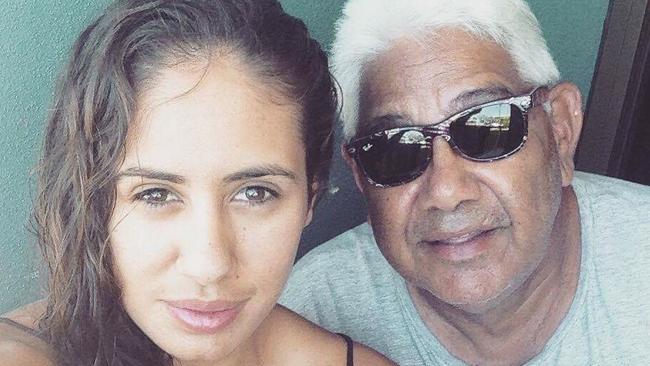
Clancy is Shannon’s only child. A single mother, she worked as a forklift driver on Kingaroy’s peanut factory floor during Clancy’s high school years.
Then, when she was 15, the buzz around the tall (Clancy is now 184cm, or just over six foot), lightning-quick player grew louder, and she was offered a full-time scholarship at the QAS. “Mum and I both moved to Brisbane then, and I played both indoor and beach volleyball at the QAS,” recalls Clancy, who also attended Holland Park High in the city’s south while at the academy.
To support her daughter, Shannon worked two jobs in Brisbane – loading and unloading forklifts for Cement Australia by day, folding and delivering junk mail, when Taliqua was at training, by night. She continued to support her two years later when Clancy was offered a spot at the Australian Institute of Sport’s (AIS) national volleyball program in Adelaide.
The two women moved to South Australia when Clancy was 17, their extended Wulli Wulli mob back in Kingaroy cheering them on, just as they will in Rio.
Wulli Wulli family ties are deeply inclusive. Grand children are treated as children, uncles and aunties as sisters and brothers, everyone, Robert Clancy says, as blood. Robert, 66, and his wife Jocelyn, 63, are Taliqua’s grandparents, and the family – along with Shannon’s sisters Kathleen, 30, and Roberta, 45 – are remarkably close.
From his home just outside Kingaroy, Robert talks of his four – not three – daughters. “There’s Shannon, Roberta, Kathleen, and Taliqua, that’s the Wulli Wulli way,” he says.
Clancy herself confirms the family ties. “Growing up I had two mums,” she says. “I called my mother ‘mum’, and my grandmother ‘mum’.
“It might sound confusing but somehow, whenever I said, ‘mum’ we all knew which one I was talking to. And I called my grandfather ‘dad’, and my aunties are my sisters.”
They all, Robert says, brought Taliqua up together in their Kingaroy home. “She was a great kid to have around, and she loved sports, any sport,” he says. “I don’t know how many hours, thousands, we’d spend with her throwing a soccer ball up on the roof, letting it roll down, letting her catch it.
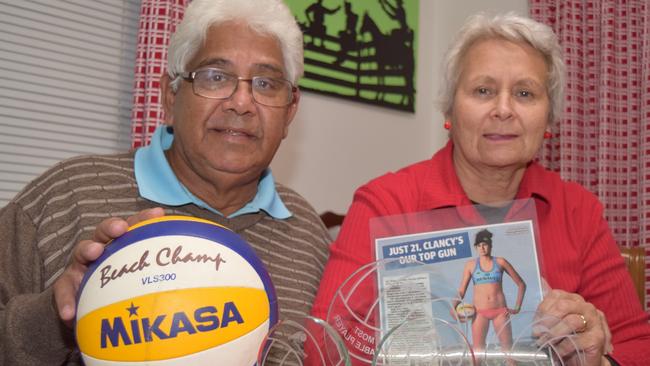
“She always had the talent, the natural ability, but what she also had was family support. That’s the key for any child, you’ve got to have that love, that back-up, that parent or brother or sister driving you to training or practising with you – throwing the ball on the roof.”
Robert worked for many years in indigenous education, conducting cultural heritage workshops, teaching indigenous children about where they came from and what it meant. He also made sure his granddaughter knew her own story.
“Taliqua’s people are originally from Eidsvold, where many Aboriginals worked as stockmen,” Robert says. “There were about 600 at one stage – working on the stations, mustering, ringbarking, fencing, and where there were three main tribes, the Wulli Wulli, the Gurang Gurang and the Wakka Wakka,” he says.
“We were the Wulli Wulli side, and Taliqua’s grandmother was brought up in a little place called Picket, on a cattle station.
“I was originally a stockman too, but when the cattle industry began to break apart, the Wulli Wulli started to disperse to other parts of the North and some to the South Burnett regions, and we ended up in Kingaroy.”
Taliqua, he says, is a true Wulli Wulli woman – strong, hardworking and a quiet achiever. “Taliqua doesn’t say too much about her sport or what she does – she does her talking on the court.”
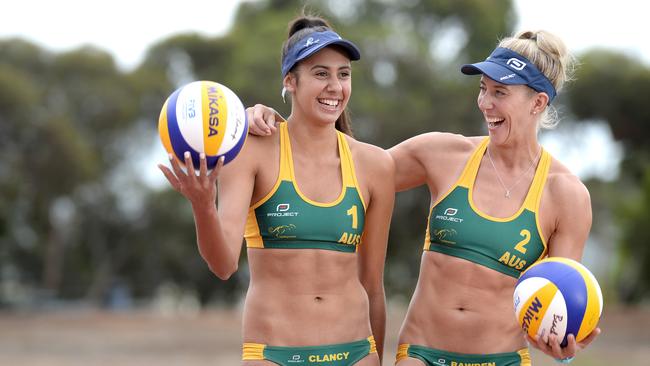
Since her selection in the national program (where she elected to concentrate on beach volleyball), Clancy has steadily moved up the international ranks with her previous on-court partners Eliza Hynes (2010-2102) and Mariafe Artacho del Solar (2012), before being teamed with Bawden in 2013 (del Solar is partnering Nicole Laird in Rio).
It is with the two-time Olympic veteran, Bawden, 35 tomorrow, that Clancy has a real shot at Olympic glory. Currently ranked seventh in the world, the rangy duo (both women are at least six foot) are known for their imposing, strong, physical presence on court.
“Are we intimidating?” Clancy laughs. “I hope so! We’re very competitive, very determined and we both have very high standards in terms of our training and our expectations of ourselves.
“I think we will have a podium finish, for sure. We are capable of it, 100 per cent,” she says, repeating the figure a moment later: “100 per cent”.
Either way, the Wulli Wulli mob will be there to see it. On their collective first trip overseas, Clancy’s mother, grandmother, sisters, one brother-in-law and one best friend are courtside Copacabana – Shannon, for one, “pinching herself”.
“I still can’t believe we’re going,” she says just prior to her Rio departure. “I feel like everything, all those trips and training, just everything has come to this; I’m very, very proud of her.”
Sadly missing from the stands will be Robert; struck down by a virus in the weeks preceding the Olympics, he is too ill to travel. No matter, he says, he’s got his own, big plans.
“I’m going to get a new TV with a big screen and I’m going to put it on the lawn, have a few friends around and watch my daughter at the Olympics; that’s pretty special, isn’t it?”
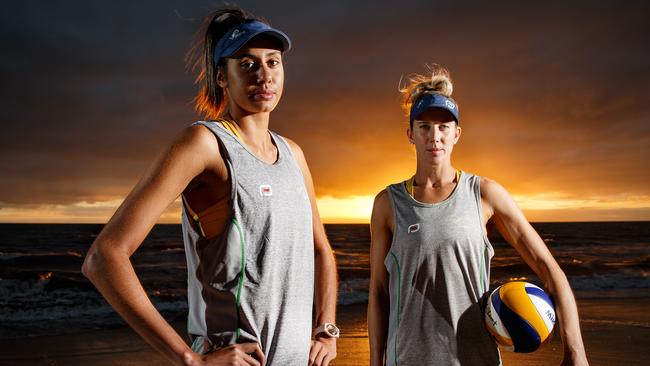
Clancy knows it is, both as an athlete and an indigenous woman. “I watched Cathy Freeman run at the 2000 Olympics,” she says, “and I remember thinking very clearly, I could do that.
“It’s so important for indigenous kids to have role models like Cathy, or (retired AFL great and former Australian of the Year) Adam Goodes, or any of our other indigenous sportspeople – and there are many – coming through; it’s so important to say, ‘See, look, we can do this, you can do this’.”
Clancy works part-time as an ambassador for the Port Adelaide AFL football club, travelling to schools in South Australia’s remote Anangu Pitjantjatjara Yankunytjatjara (APY) lands.
“Working within the APY is very important to me; we encourage recognition of cultural identity, we share healthy eating and lifestyle tips, we have footy carnivals and we just play with the kids.
“It’s awesome,” Clancy adds, “and I like to tell them my story too, because it’s really about not letting where you live or where you come from decide who or what you are going to be.”
Rio will also be Clancy’s chance, she says, to thank her family for all they’ve done for her, those long trips in the Barina, the ball games in the back yard, the interstate moves and the financial juggle.
“I am so happy (most of) my family will be with me – I want them to see what it all meant, what it all comes to.”
Clancy makes her Olympic debut tonight, her Wulli Wulli mob in the stands, her father/grandfather Robert watching on a big screen in his back yard with his friends and neighbours – and all of them, Jocelyn says, shaking their heads in wonder.
“I mean, how could a Wulli Wulli woman, who grew up in peanut country, two-and-a-half hours from the sea, be playing beach volleyball at the Olympics?” Jocelyn asks.
It’s a good question, and the answer probably lies somewhere in the Eidsvold, among the cattle properties and the peanut farms, beside the Dawson, and on the D’Aguilar highway – somewhere along the way, where the river meets the sea. ■



